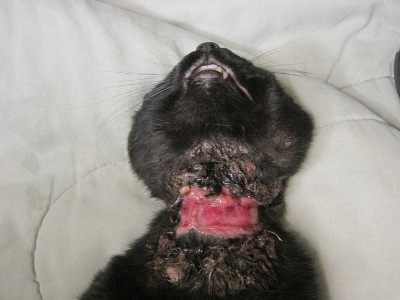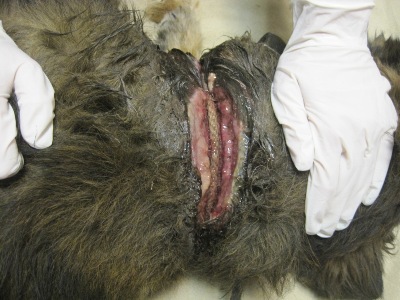Save Animals’ Necks From Embedded Collars
Here’s another reason why we all need to be “watchdogs” for dogs and cats who are kept chained or caged in our neighbors’ backyards, allowed to roam, or otherwise neglected: embedded collars. When someone puts a collar on a young animal and doesn’t bother to loosen the collar as the animal grows—or when someone places a too-tight collar or rope around the neck of a chained dog—the collar can actually grow into the animal’s neck, leaving the dog or cat in extreme misery and pain.
Embedded collars are absolutely horrifying, but they happen all the time. PETA’s Cruelty Investigations Department recently handled two such cases on the same day: one in which a stray cat had a flea collar deeply embedded in his throat with the buckle digging in, and one in which a chained dog named Brownie had a rope painfully embedded halfway into his neck. Brownie’s teeth were worn down to nubs, probably from desperate attempts to free himself.


Let’s make sure that no animals in our neighborhood end up like this poor cat or dog by being “nosy neighbors”—checking on chained and caged dogs and roaming cats, as well as monitoring the fit of our own animals’ collars regularly.
Written by Lindsay Pollard-Post

